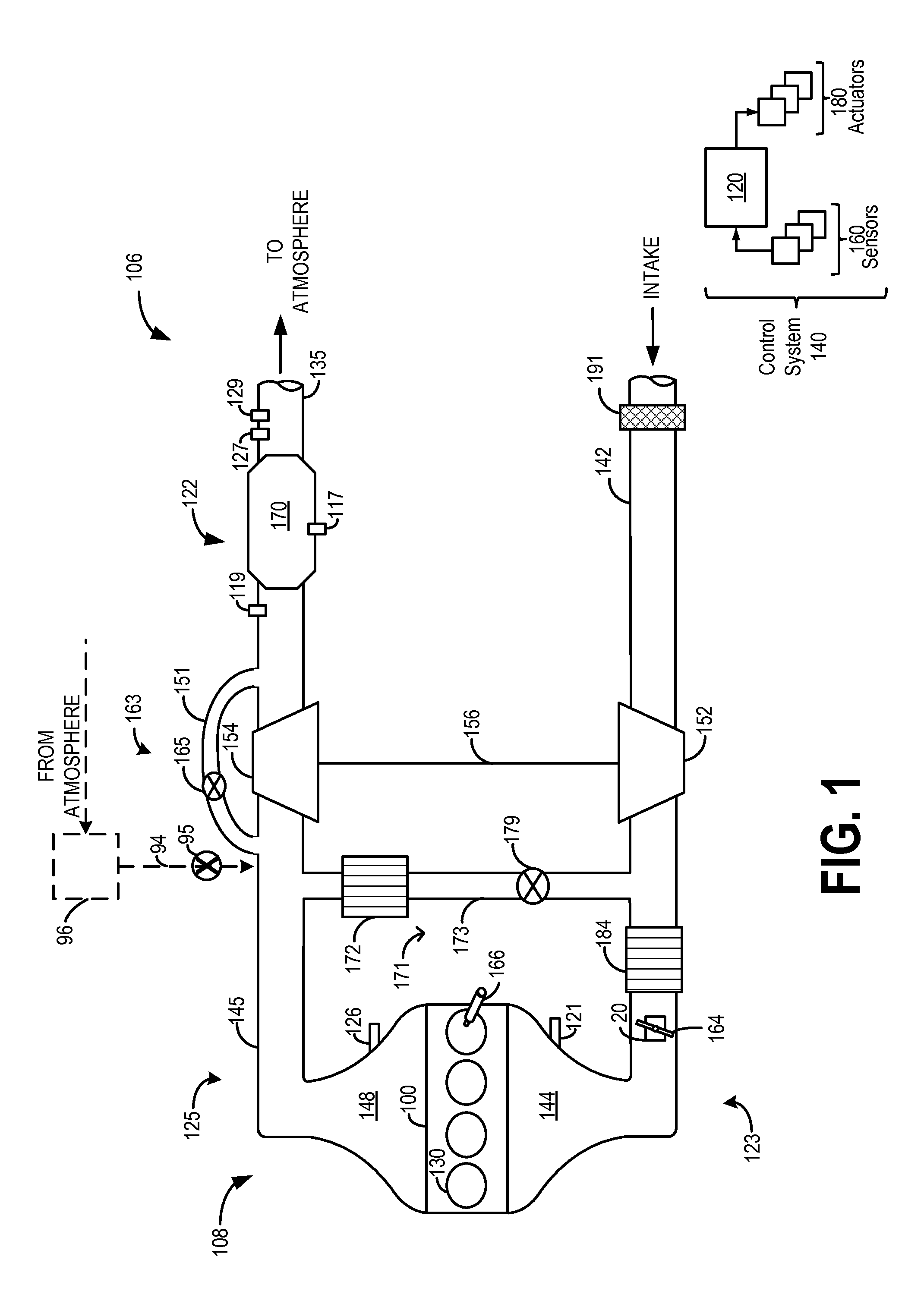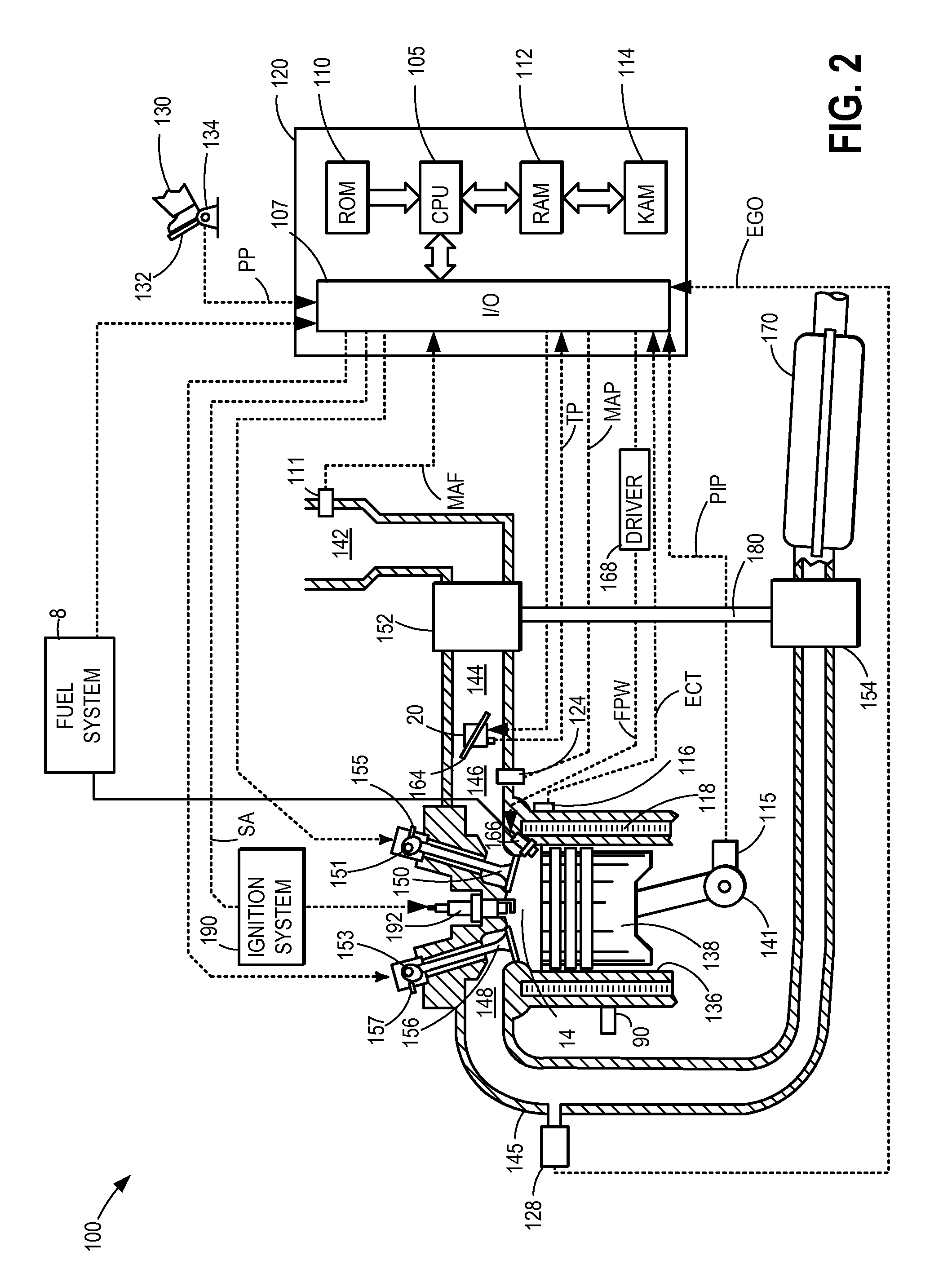Coordination of secondary air and blow-through air delivery
a secondary air and air delivery technology, applied in the direction of electric control, ignition automatic control, machines/engines, etc., can solve the problems of undesirable power lag, torque may not be available, power, fuel efficiency, emissions-control performance of a boosted engine, etc., to achieve greater fuel efficiency, lower emissions, and power. the effect of reducing emissions
- Summary
- Abstract
- Description
- Claims
- Application Information
AI Technical Summary
Benefits of technology
Problems solved by technology
Method used
Image
Examples
Embodiment Construction
[0017]Methods and systems are provided for reducing turbo lag in a vehicle engine, such as the engine system depicted at FIGS. 1-2. During a tip-in, secondary air injection and blow-through may be coordinated to expedite spinning of a turbine to a desired speed, and increase initial torque output. A controller may be configured to perform control routines, such as the example routines of FIGS. 3-6 to determine a type of engine operation that may be performed (e.g., secondary air injection and / or blow-through) during the tip-in, and to adjust the engine operation based on the type of operating mode. Example secondary air injection and blow-through adjustments are described at FIG. 7.
[0018]FIG. 1 shows a schematic depiction of a vehicle system 106. The vehicle system 106 includes an engine system 108, including engine 100 coupled to emission control system 122. Engine 100 includes a plurality of cylinders 14. Engine 100 also includes an intake 123 and an exhaust 125. Intake 123 may re...
PUM
 Login to View More
Login to View More Abstract
Description
Claims
Application Information
 Login to View More
Login to View More - R&D
- Intellectual Property
- Life Sciences
- Materials
- Tech Scout
- Unparalleled Data Quality
- Higher Quality Content
- 60% Fewer Hallucinations
Browse by: Latest US Patents, China's latest patents, Technical Efficacy Thesaurus, Application Domain, Technology Topic, Popular Technical Reports.
© 2025 PatSnap. All rights reserved.Legal|Privacy policy|Modern Slavery Act Transparency Statement|Sitemap|About US| Contact US: help@patsnap.com



